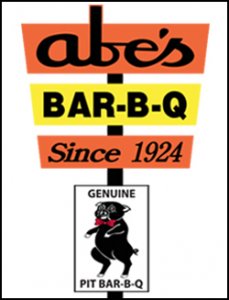
Lil John McKee training an employee on a computer operated spray rig
By Lil John McKee
Guest Bohemian
(Clarksdale, Mississippi)
Precisely.
Following is an excerpt from an interview done last fall in the Clarksdale Press Register by the chief Delta Bohemian himself, Billy Howell. He interviewed me for the purpose of reducing into layman’s terms what exactly is “Precision Farming.” I thought he did a good job of illustrating the salient points; hence the excerpt is loosely repeated here.
Q: Precision farming seems to be one of the big buzz words in agriculture today. How would you define precision farming so someone not overly familiar with farming would understand?
A: “Precision farming is breaking the farm down into little bitty pieces like it used to be in the old days when everybody farmed a little patch, and back then every little patch was different. They were small and everybody treated them differently–on the heavier soil they would do this, and on the lighter soil they would do that, and they would do different things all in-between given the different soil types and different practices.
“As farms grew in size all those little patches got put together, but they still retained their inherent characteristics, whatever they might be, and that characteristic is still out there in the field. What precision farming does is allow us to go back and isolate that piece again, and apply the agronomic practice for that piece that makes the most sense.”
Q: What applications or processes allow you to do that with modern technology?
A: “The biggest advancement in all of precision farming was the GPS satellite positioning technology, and that allows us to take a GPS and couple it with a tractor with a computer, and the tractor at that point knows where it is positionally. Then the tractor can match that up with a map already in its computer database and it can compare where it is to something we know is out there on the ground–it might be a soil type, or it might be a plant. So, the computer does some mumbo-jumbo and applies the right input right there on that little small unit of land.”
Q: I noticed you were training a new sprayer operator. Does the sprayer use precision farming?
A: “The computer on the sprayer is getting position information from the GPS every second and the computer has a map underneath it. It knows where the boundary of the field is, as well as knowing where it has already sprayed. It knows how much it is supposed to spray and it does it based on where it is located in the field. If the sprayer doubles back on an area that has already been sprayed, then it automatically cuts itself off.”
Q: What trends are you seeing in crop selection, pricing, and production?
A: “We are seeing less cotton and more grain in our area. This year is an exception; the cotton market is finally revived, so this year people are growing more cotton. We were number two behind Texas for a long time in cotton acreage, but we are now way down the list. As of 2009, we were growing less cotton than North Carolina.”
Q: What is your opinion of the impact of ethanol demand on corn production and pricing?
A: “I think ethanol is a shooting star, but it is shooting still, so we are taking advantage of it with the price of corn up. I’m going to keep my acres the same; I think you will see corn acres stay the same or go up this year.”
Q: You mentioned you grow a yearly crop mix that includes cotton, soybeans, corn, and wheat. How are crop prices overall this year?
A: “Grain prices are pretty good and dropping, and cotton is holding its own and rising. The fundamentals for cotton supply and demand look better for cotton than for any other crop right now.”
Q: Though a break even or good year farming is dependent on the price crops were sold for, are there yield expectations for what constitutes a good crop year–in and year out?
A: “A good yield for cotton is 1,250-1,300 lbs. per acre. A good cotton crop used to be two bales or 1,000 lbs. It has risen due to the costs of producing a cotton crop being more experience today. That trend has gone on forever and it will continue. Our margins are tiny and we have to get better every year.
“A good yield for corn is now 200 bushels per acre. Soybean yields have been trending up and a good yield is 50-55 bushels per acre, and a good wheat crop is 80 bushels–which is now a high water mark.”
Q: Do you grow winter wheat and spring wheat in the Delta?
A: “Soft, red winter wheat is all that we can grow at this latitude. We can’t grow spring wheat, and our winter wheat is planted between October 15 and November 15, and is harvested sometime in June.”
Q: How has technology effected crop production?
A: “Technology has increased the amount of production in the world. It has possibly made food cheaper, but it has put the control of production agriculture largely in the hands of primarily two or three companies. Technology has made us all dependent upon it. Those of us who adopted it are now hooked.
“One disturbing thing about technology is due to our dependence on the companies that develop it. They now do all the research, whereas research in the past was done by the public, and that manifested itself in the extension service with the agricultural universities. In 1985 when I started farming, Mississippi State had developed all these varieties that found their way to the market place.
“That germ plasm (hereditary material that is transmitted from one generation to another) was open, and everybody had access to it. Now, the very best can’t be improved on, only one company owns it, and they are not interested in anything but taking care of their stockholders. So, the public good and the stockholder good are in conflict right now, and some people are concerned that will hurt production over the long term, but I would say production has jumped as a result of technology.”
Q: Is financing a crop in today’s economy more difficult than it used to be?
A: “Crop financing is like the biggest one arm bandit in the world and you only get to pull the arm once a year. It’s an unbelievable gamble, and a very small percentage of the people who farm do it without borrowing significant amounts of money to produce a crop. Not to mention, the money they borrow to buy land or equipment.
“There was an old banking standby that said, ‘Good man, good plan, good land.’ If a guy was a high quality individual, he had a good plan and knew what he was doing and had it mapped out and he had good land, then financing was not a major problem.”
In summation, McKee said he feels agriculture will always be around. He says it is not a sexy business, but it will always be here, because people have to eat and consume what comes from the dirt. People have to clothe themselves, and need products that come from the land. The big question for McKee is what form agriculture will take in the future.










Amazing technology. Now, get that yield monitor calibrated just right and you’ll see slowing down that combine when you are harvesting corn will give you an extra 20 bushels an acre. You were gonna have to wait on a truck anyway! Right?
Cal,
Not a bad idea! I’ll try that. We have a saying around here about yield; some folks measure their acres in the spring, and some folks measure them in the fall.
JM